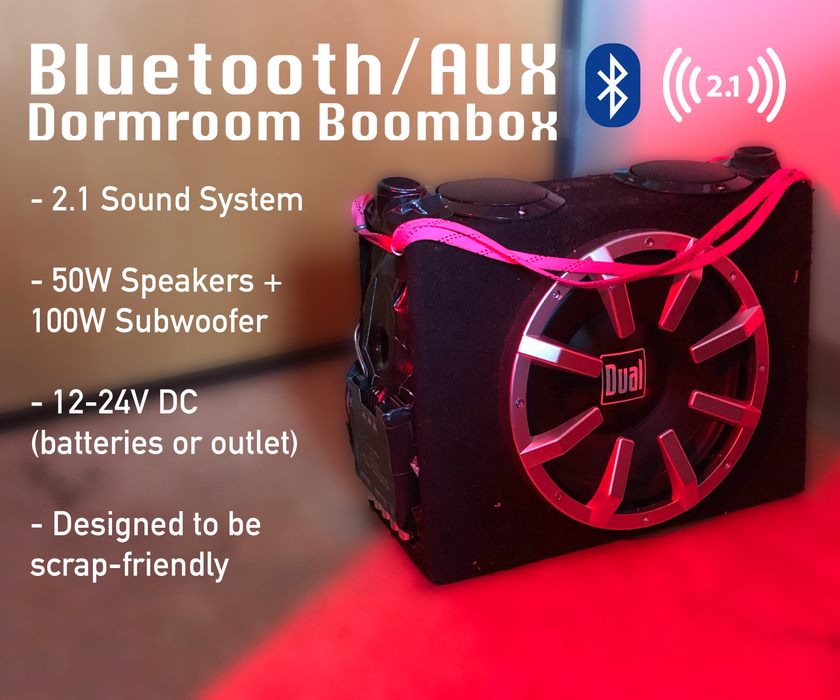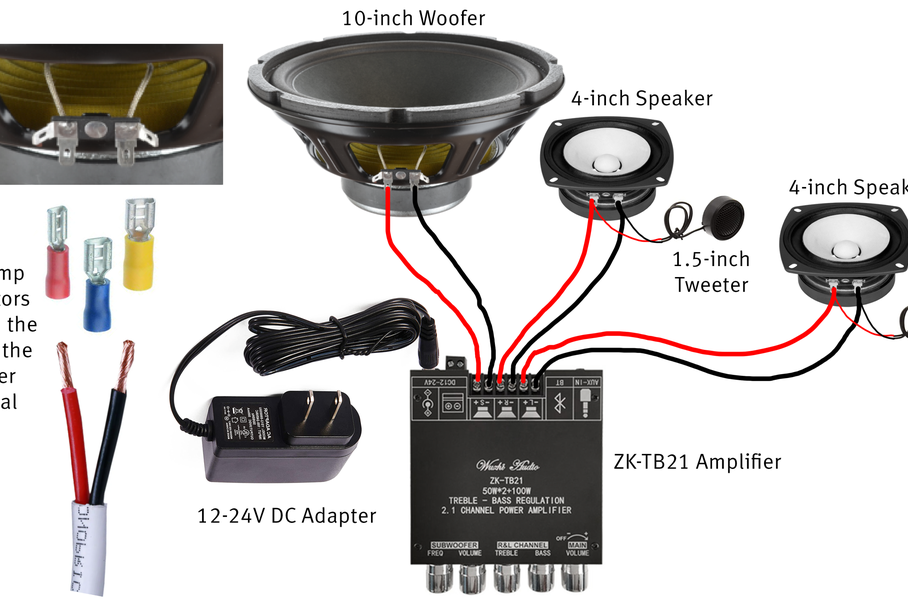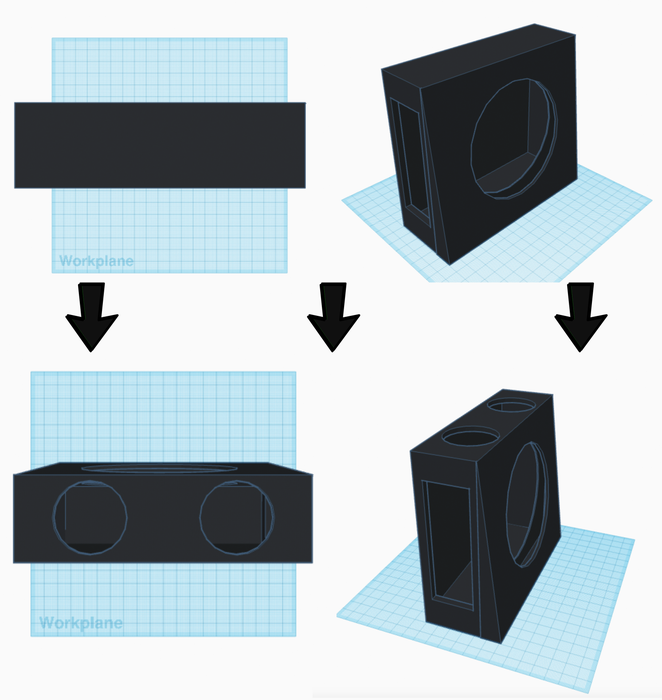
In this project, I had a cheap, spare car subwoofer that I wanted to put to use. However, the amplifier board it used was proprietarily made to be attached to cars, as well as much too clunky for the low quality sound it provided. I wanted to find a way to recycle the part, and I also wanted a good speaker system to fill a dorm room. So, I began by taking the subwoofer apart with a screwdriver. Once all of the pieces were out, I threw everything except the box and the woofer. From there, I could begin working.
Supplies
1x 4 ohm 10-inch Woofer (100-400W)
2 x 4 ohm 4-inch Full Range Speakers (50W each)
2 x 1.5-inch Super Tweeters (100W each)
1 x ZK-TB21 Bluetooth 2x50W+100W Amplifier Board (12V-24V)
2 x 6V Lead-acid Batteries (4.5A)
16 Gauge Insulated Copper Wire w/ Various Crimp Connectors
1 x DC Power Adapter (12V-24V)
1 x Female DC to Alligator Clip Cable
2 x 4-inch Speaker Grills
Step 1: Speaker System + Wiring
A good speaker system in a car has 4 key components:
1. Full range speakers – these are the main speakers, and play best between 100-4000Hz. A good pair of these can be bought for just $10 each.
2. High range tweeters – these are for high pitch sounds, and play best between 2000-15000Hz. A set of these can be bought for $8 total.
3. Low range subwoofers – these are for low range sounds and thumps, and play best between 50-250Hz. I reused the original subwoofer, but these can be bought for about $20.
4. Audio receivers/converters/amplifiers, a three way part; the receiver accepts the audio, sends it to the digital-to-analog converter (DAC), which then signals the amplifier for the speakers. Because I am adapting this system from a car to a portable board, this is the most important part to get right. The ZK-TB21 board accepts Bluetooth and/or AUX, powers a subwoofer channel at 100W and 2 speaker channels at 50W each, and is powered by either a DC adapter or a battery connection. These boards, and ones that produce similar operation, go for about $30.
To connect the speakers to the board, I used insulated copper wire and looped it onto crimp connectors. I then connected each speaker to their respective ports (see chart). I then connected the board to an DC adapter in it’s power connection to make sure my system worked.
Step 2: Construction: Fitting and Powering
With an empty subwoofer box, we only have 2 accessible points: a hole for the amplifier and a hole for the woofer. To fit the speakers, I measured out two 4-inch circles on top of the box, and drilled them through to sit the speakers in. To power the speaker, I connected two 6V lead-acid batteries to each other to make a series. This way, they both operate as a single 12V supply and are rechargeable (I added an extra DC to alligator clip to the batteries to serve as a charging port). I can then connect that series to the amplifier’s DC connector (see chart). I tucked each battery into one side of the speaker and fit everything inside the casing. For the tweeters, I drilled extra holes just big enough for their wires to fit through so I could attach them to the top.
Step 3: Quality Modifications: Protection, Carrying, Airflow
For protection, I added a grill on top of each of the full range speakers, and reused the grill from the original subwoofer. The tweeters are sealed with soundproof tape, as well as the amplifier. To control the airflow being produced inside of the box (this is important for acoustics), I fitted a cardboard tube to a piece of recycled plastic and sealed that too with soundproof tape. For carrying, I attached four hook screws to the box, one in each top corner, and looped a long shoelace around to function as carrying straps.
Step 4: Finished Product
Once you put it all together, the inside of the speaker will look something like this. Lock the subwoofer in and your boombox is complete!











